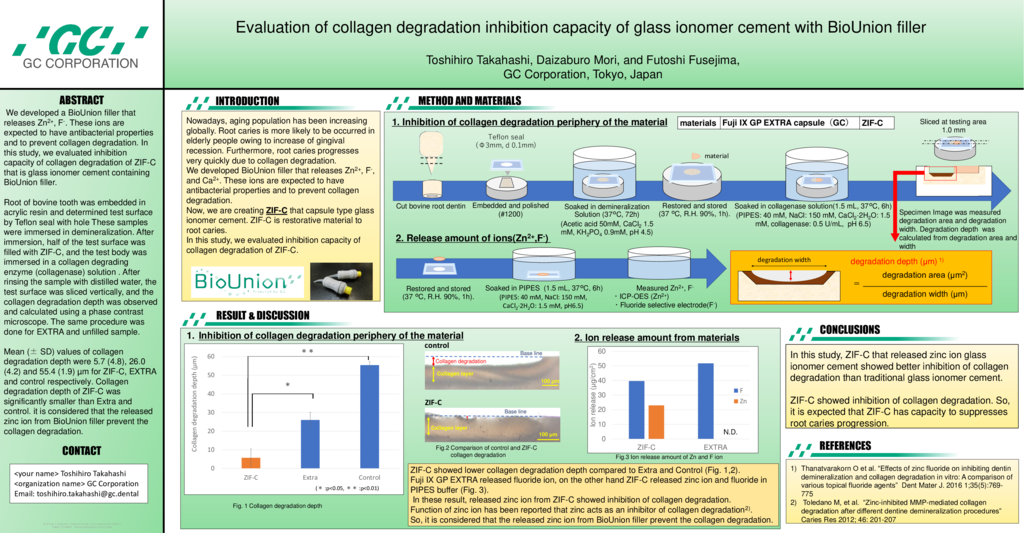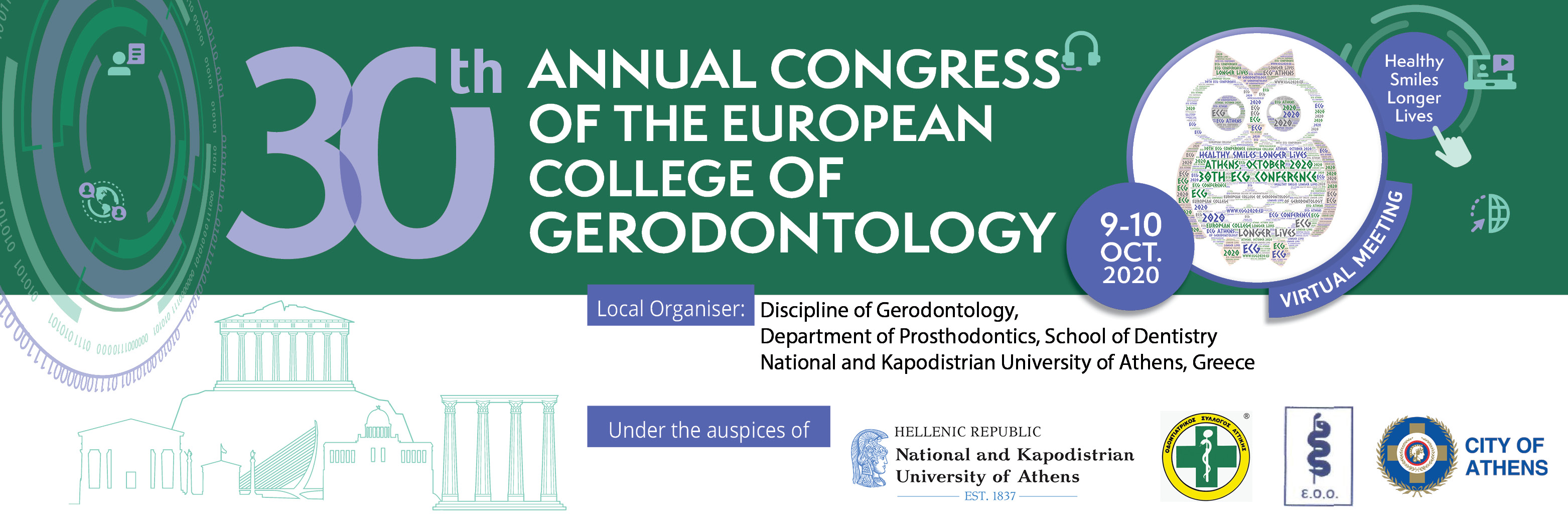Background and aim: Nowadays, aging population has been increasing globally. Root caries is more likely to be occurred in elderly people owing to increase of gingival recession. Furthermore, root caries progresses very quickly due to collagen degradation. We developed a BioUnion filler that releases Zn2+, F-, and Ca2+. These ions are expected to have antibacterial properties and to prevent collagen degradation. In this study, we evaluated inhibition capacity of collagen degradation of ZIF-C that is glass ionomer cement containing BioUnion filler. Materials: ZIF-C, Fuji IX GP EXTRA Capsule (EXTRA) Method: Root of bovine tooth was embedded in acrylic resin and determined test surface by Teflon seal with hole (3 mm diameter and 0.1 mm thickness). These samples were immersed in demineralization solution (acetate buffer: 50 mM, CaCl2·H2O: 1.5mM, KH2PO4: 0.9 mM; pH 4.5) for 60 hours. After immersion, half of the test surface was filled with ZIF-C, and the test body was immersed in a collagen degrading enzyme (collagenase) solution (PIPES: 40 mM, NaCl: 150 mM, CaCl2·2H2O: 1.5 mM, collagenase: 0.5 U/mL) for 6 hours. After rinsing the sample with distilled water, the test surface was sliced vertically, and the collagen degradation depth was observed and calculated using a phase contrast microscope (BX51, OLYMPUS, Japan). The same procedure was done for EXTRA and unfilled sample (control). Results: Mean (± SD) values of collagen degradation depth were 5.7 (4.8), 26.0 (4.2) and 55.4 (1.9) µm for ZIF-C, EXTRA and control respectively. Collagen degradation depth of ZIF-C was significantly smaller than Extra and control. These results show that ZIF-C inhibit activity of collagenase. Function of zinc ion has been reported that zinc acts as an inhibitor of collagen degradation1). So, it is considered that the released zinc ion from BioUnion filler prevent the collagen degradation. Conclusions: ZIF-C showed inhibition of collagen degradation. So, it is expected that ZIF-C is suitable material for inhibiting root caries progress. Reference 1) M. Toledano, et al. Caries Res 2012;46:201–207
- 78 views



